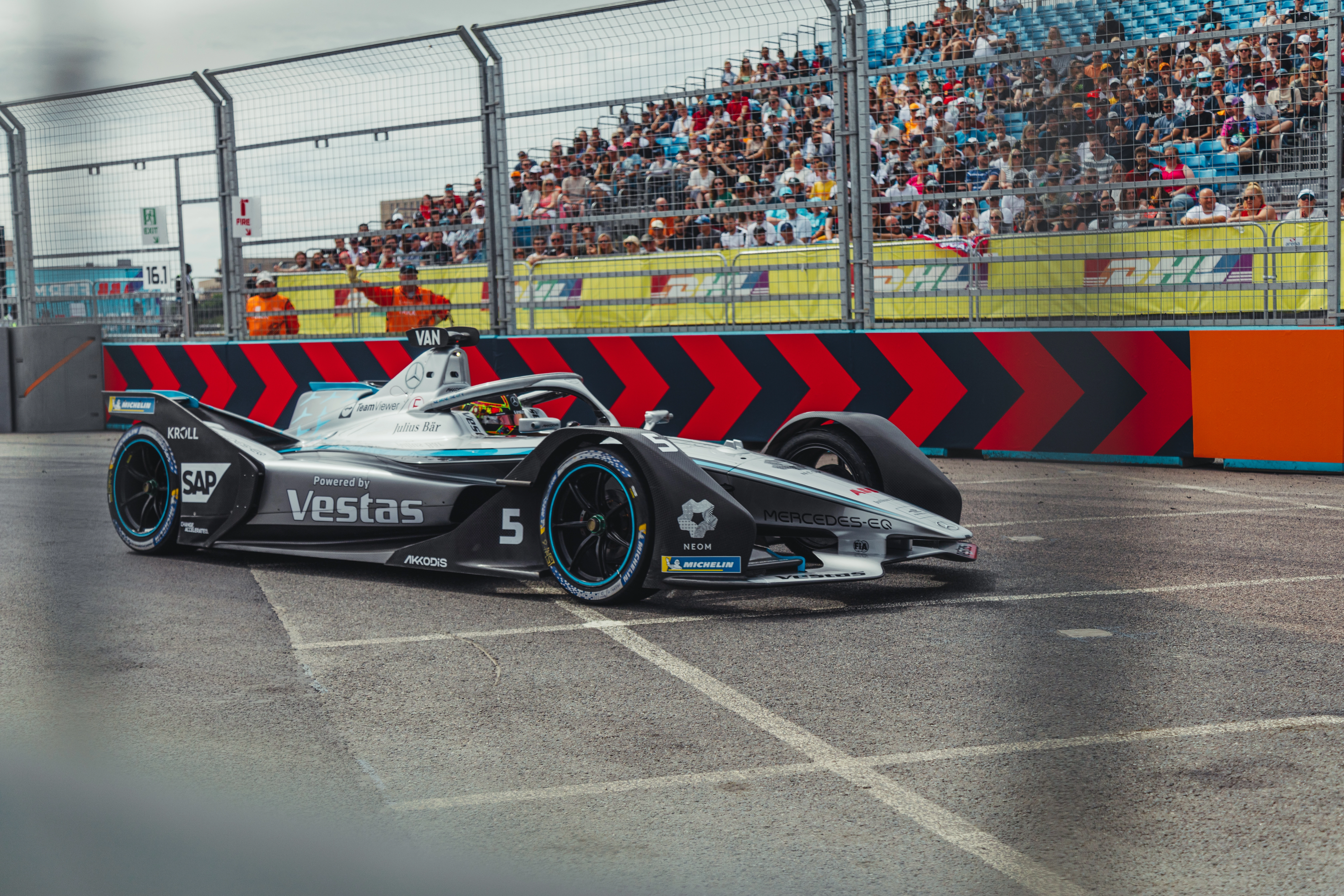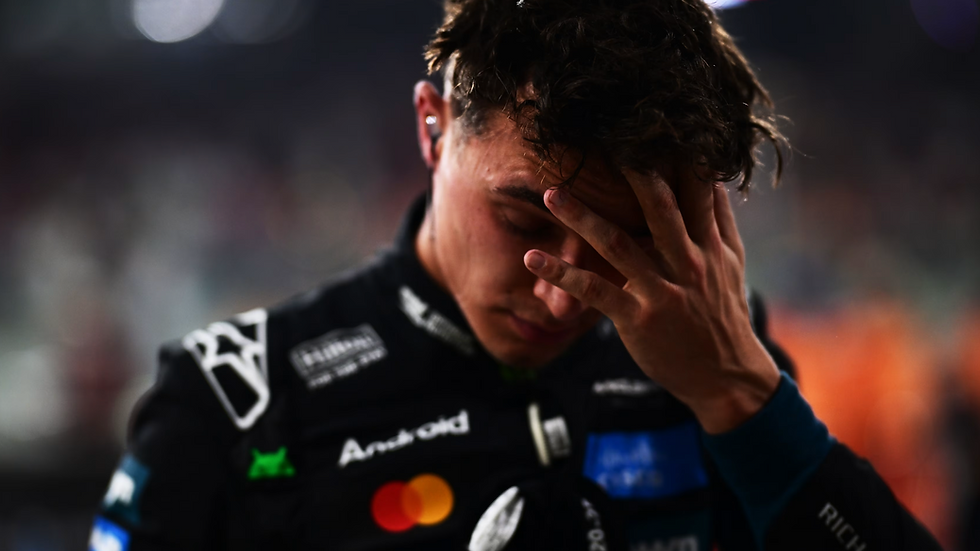IndyCar Portland Friday Stories: O’Ward’s title hopes, Armstrong’s lessons and hybrid “step down”
- Archie O’Reilly

- Aug 24, 2024
- 6 min read
Updated: Jan 6
Written by Archie O’Reilly
IndyCar’s final Friday at a road course in 2024 has concluded at Portland International Raceway. And Scott McLaughlin led the way for Team Penske on the combined time sheets in the weekend’s first track action.
As is often the case in road course practice, drivers were testing the limits. There were occasional spins and a number of off-track excursions, plus impressive saves headlined by a double catch from most recent winner Josef Newgarden. Many drivers were also getting to grips with the Turn 1 runoff zone and its many obstacles.
Tensions were frayed last weekend at World Wide Technology Raceway and a hint of aggro carried over. Romain Grosjean was one driver to slow at the Turn 1 apex after exiting the pits, with Graham Rahal left frustrated by this and appearing to instigate contact with the No.77 Juncos Hollinger Racing Chevy.
The initial 45-minute all-skate running was topped by Alexander Rossi for Arrow McLaren. A pair of Penske drivers, Power (second) and McLaughlin (fourth), also featured in a top five completed by Andretti Global’s Colton Herta and Ed Carpenter Racing’s Rinus VeeKay.
Returning for the first time since Laguna Seca last year, Juri Vips was ninth for Rahal Letterman Lanigan in the all-car session. He ended a respectable 20th in the combined charts after the group segments, ahead of teammate and 2023 Portland pole-sitter Rahal.
The two 10-minute group sessions that followed offered a chance to switch to the alternate tyres (which Rossi did in the initial session). McLaughlin’s session-topping time was set in the opening group, with Marcus Armstrong heading the session of the split segments for Chip Ganassi Racing.
Alex Palou, two-time Portland winner, was second on the overall time sheets, ahead of teammate Armstrong. Rossi’s alternate time held up for fourth overall, with Scott Dixon a third Ganassi car in the top five.
Power was sixth, followed by David Malukas for Meyer Shank Racing. Herta was eighth and Arrow McLaren’s Pato O’Ward ninth, with AJ Foyt Racing’s Santino Ferrucci rounding out the top 10.
Here are some stories to come from Friday…
O’Ward targeting championship top three
O’Ward’s weekend at Gateway - one of his strongest tracks with an average finish in the podium spots - ended abruptly with a mechanical failure, putting him 98 points adrift of Palou’s championship lead. And with four races remaining, any chances of mounting a title challenge look bleak.
“I would love to get back on the podium and win before the end of the season,” O’Ward said. “It would be a very strong close. In terms of championship, if we’re scoring that in the next four races, I think we’ll be looking good. Obviously probably out of reach for first - the mishap in Toronto and then in Gateway, that kind of put us out of the fight if we want to be realistic.
“It definitely is a possibility to fight at the front and win races and be on the podium. That’s what we want to push for because I really don’t care if I’m fourth, sixth, seventh, eighth in the championship. For me it makes no difference. We want to be in the top three. If we can’t do that, we’ll do our best to position ourselves to win the race.”
A session of learning for O’Ward
O’Ward, who started practice somewhat slowly and “was ploughing like a pig” in practice, is relatively hopeful about his chances in Portland. Teammate Rossi was quickly on the pace and O’Ward managed to claw back the initial gulf.
“Started on the back foot,” he said. “We just rolled off the truck not in the window at all with what we needed the car to be doing or with what I needed the car to be doing. Made changes - a lot of changes - throughout the session, improved it quite a chunk. Definitely ended in a way better spot than where we started the session.
“Considering that, it was productive and positive. We’re going to start the day in a stronger position tomorrow I’d say. We basically got to where we needed at least in terms of where our teammate [Rossi] was. There’s still some work to do but I think we’ve definitely cut it down at least [to] a 50 percent gap to what we started the session with.”
Armstrong’s sophomore year assessed
Armstrong’s second season in IndyCar - his first season complete with ovals - has been one of more progress in his eyes. He has shown good qualifying speed - nine times in the top 12 from 13 attempts - and has six top-10 finishes, even with some inconsistencies to iron out.
“Of course, I want to be at the very front - that’s the target,” he said. “I feel like we’ve made really good progress this year. In terms of our genuine speed, that’s always been there. I’m proud of the crew - I feel like every single weekend we are still making progress.
“It is difficult to arrive in America from Europe and learn these tracks quickly. This year certainly has been a big step forward.”
A lot has been learned since his rookie season.
“There’s a lot of nuances to racing IndyCar - a lot of fuel saving, tyre management in a slightly different way to Pirelli,” Armstrong said. “The racing itself, the sort of strategy, you need to understand it when you’re inside the car. It does take a few minutes to understand that.
“Compared to my first race at St. Pete last year to where I am now, I have a much better understanding of how to win a race just from a strategy point of view. When I’m inside the car, there’s a sense of relief that I sort of understand the concept of it.”
Processes of a rookie oval driver
Two of Armstrong’s top-10 results have come in his first three completed career oval races - one at Iowa Speedway and last weekend at Gateway.
“Thankfully I’m adapting to it,” Armstrong said. “I felt like it was very natural inside the car… It’s obviously very different to what I’m used to. But I’ve got great data and great teammates to learn from.
“In Gateway, I was very instinctual, to be honest - following cars, attacking restarts, all of that. It’s kind of like being back in Europe in karting. You need to either attack or you’ll be attacked. I enjoyed that aspect. It helps when the car is as solid as it is on ovals.”
Doubts over hybrid road course racing
IndyCar’s visit to Gateway was the best race by a margin since the introduction of the hybrid system; the series was credited for its package - an improvement on concerns about the added weight during the Iowa doubleheader. But road and street racing is a different game.
It has been detailed by drivers that the impact of the horsepower boost is less significant on ovals due to the constant speed. That should be different on road and street courses, though there are worries about how the racing has been impacted after Mid-Ohio and Toronto.
“It’s a simple system,” O’Ward said. “It’s kind of like using push-to-pass; instead of using the boost from the engine, it’s using it from the battery pack. I would say it hasn’t been a massive change in terms of what we need to do in the car. Obviously there’s more times we need to click this button.
“I think it’s been more of a factor for the racing. I think the racing has taken a big step down just looking in Mid-Ohio, Toronto. People don’t need to use their push to pass anymore to defend sometimes. That’s just opened doors to less fights on track.”
Armstrong also likened the system to push-to-pass in its nature and agrees with O’Ward’s comments about its relative simplicity.
“It’s just more power at the push of your finger,” he said. “It’s not too complex. I would say it’s more of a defence mechanism than a form of attacking. For example at Gateway, whenever I felt like I had a bad exit from a corner, I would be able to save myself from being overtaken just by deploying all of my battery. That’s almost a comforting thing with your racing.”
IndyCar’s split practice format evaluated
IndyCar has used its split practice format - a 45-minute all-car session and two split 10-minute group sessions - on street courses and now the 12-turn, 1.964-mile Portland road course. And given frustration with traffic and being unable to notch a clean lap (especially on alternate tyres), drivers are content with the change.
“I think it’s fantastic, this idea of two groups,” O’Ward said. “Obviously the first part of it is all together but it’s good to have a chance with the reds, at least get a few laps together where you know that you’ll get the track distance or track respect that you would want.
“The reality is 27 cars just don’t fit around a 58-second lap. Everybody wants a two or three-second gap. The math just doesn’t do it - the grid is way too big for the track lengths we race at during the calendar.
“This is a necessity, I would say, for 80 percent of the tracks. Obviously at Road America we don’t need it, but in places like this, all the street courses, it’s a 100 percent must.”
















Comments